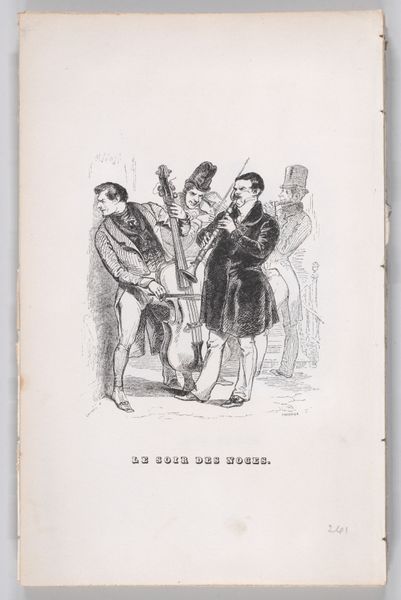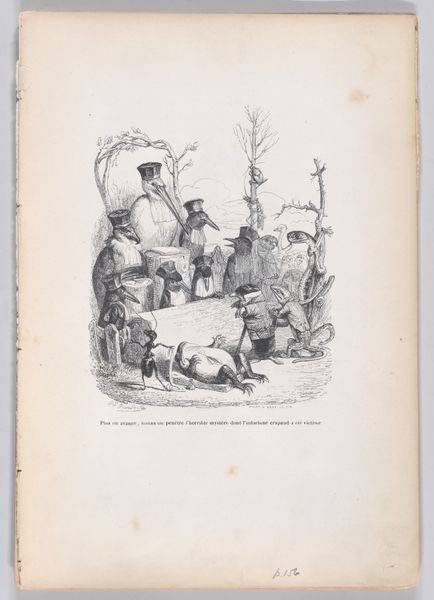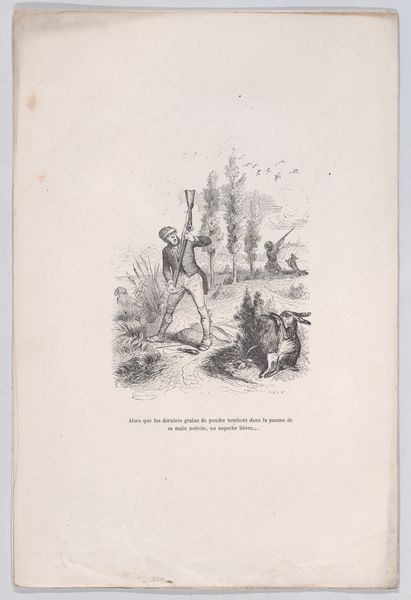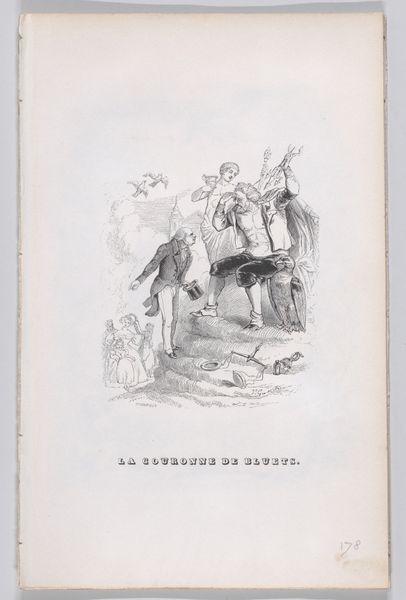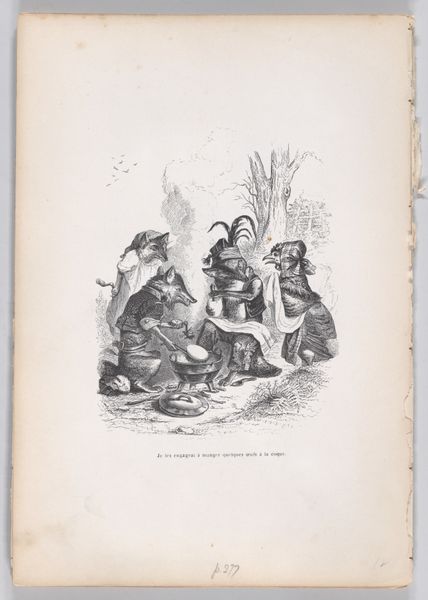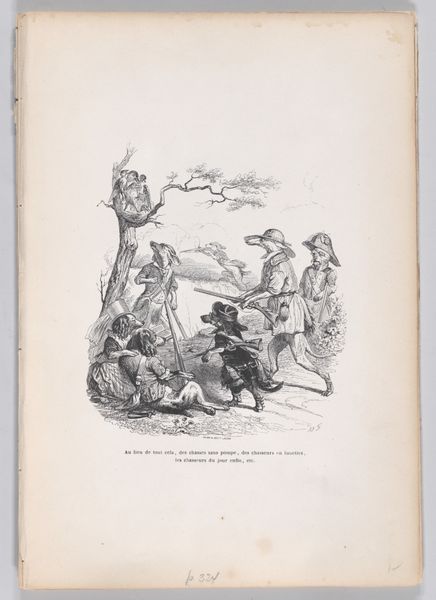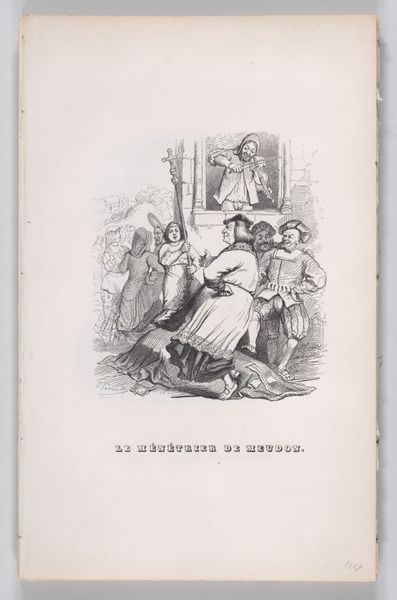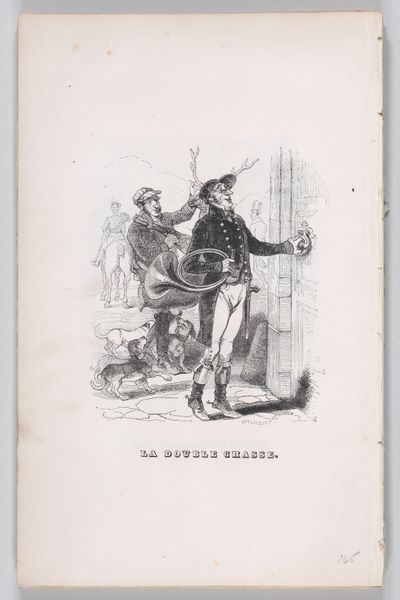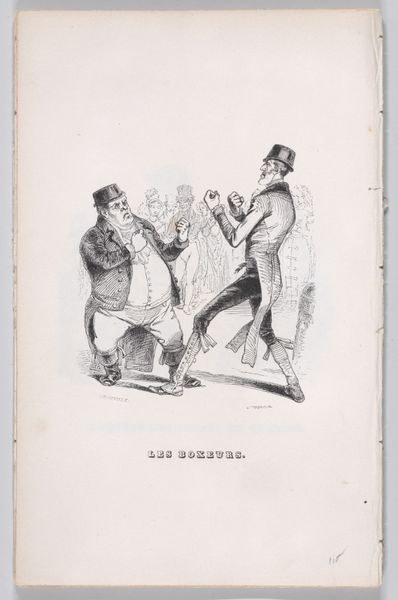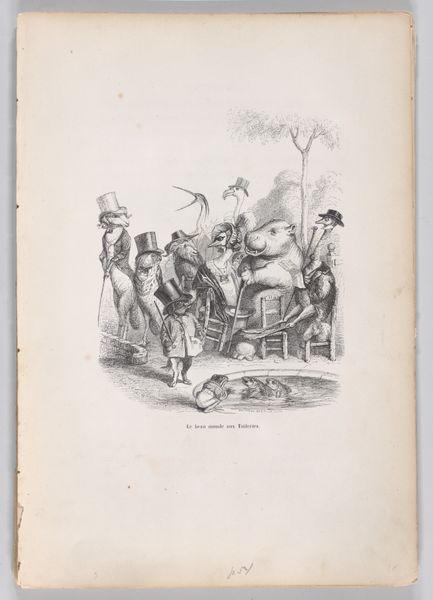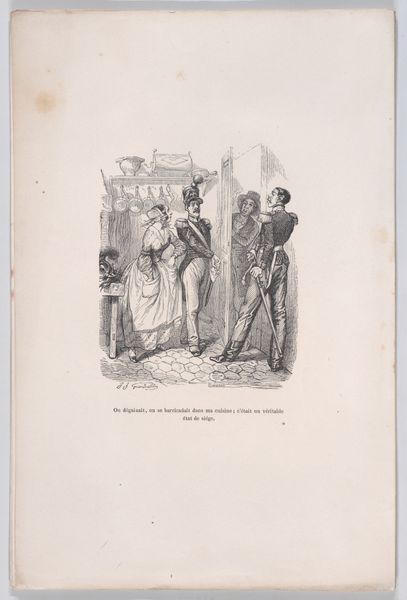
"The Old Minstrel" from The Complete Works of Béranger 1836
0:00
0:00
drawing, print, etching
#
drawing
#
narrative-art
# print
#
etching
#
figuration
#
romanticism
#
line
#
genre-painting
Dimensions: Sheet: 8 5/8 × 5 1/2 in. (21.9 × 14 cm)
Copyright: Public Domain
Curator: Today, we are looking at J.J. Grandville's etching, "The Old Minstrel," which was included in an 1836 edition of "The Complete Works of Béranger," and now resides here at the Metropolitan Museum of Art. Editor: There's something poignant about it. The meticulous lines emphasize the weariness of the minstrel, yet the dancing figures in the background convey movement and life, creating an interesting juxtaposition. Curator: Indeed. Grandville was known for his sociopolitical commentary. Béranger's poems often spoke of the common person and nationalism. I believe this etching serves as a visual commentary on the role of tradition and artistry within changing social dynamics. Editor: I can see that, particularly when focusing on the formal aspects. The composition itself creates a strong focal point. The lines converge towards the minstrel's face, inviting viewers to contemplate his expression—that downward gaze is a particularly potent example of how a line alone can convey a wealth of emotion. Curator: Absolutely. Furthermore, consider that Béranger's poems and this illustration were circulating at a time of significant political upheaval in France. This imagery would likely have resonated with people facing their own societal changes, sparking a conversation about identity, legacy, and the impact of the past on the present. Editor: The high contrast etching technique really enhances that dialogue, wouldn’t you agree? Those areas of stark shadow around the tree and around the minstrel himself underscore a certain isolation. While the open, light filled background hints at possibility. Curator: An excellent observation! It prompts me to consider how this portrayal of a musician intersects with the broader narrative of artistic expression in a period defined by both Romanticism and early industrialization. Was it commentary? Critique? Nostalgia? All are entirely possible. Editor: Looking at this now, my eye keeps being drawn to the quality of line and how they interact—what began as a straightforward narrative is, upon reflection, actually rich with details about form, void, balance, and perspective. Curator: I leave with renewed interest in how this etching, a collaborative work in itself, fostered conversation about Béranger's works. Thank you for calling my attention to these details. Editor: The interplay between visual elements and social context deepens the appreciation of Grandville’s artistry. An image that sparks many interesting observations!
Comments
No comments
Be the first to comment and join the conversation on the ultimate creative platform.
